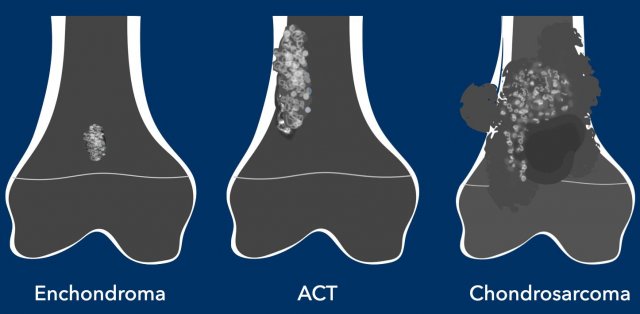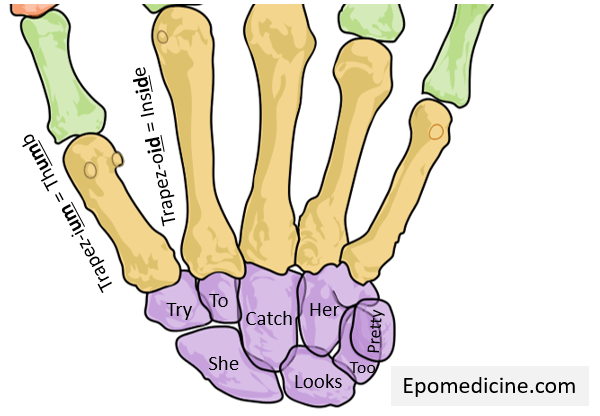Among cartilaginous tumors, 2 pathologies can be misleading when trying to reach a correct diagnosis: enchondroma (E), a benign tumor, and low-grade chondrosarcoma (LGC), which is a low-aggressivity malignancy. This can be a problem when deciding treatment because E only requires regular follow-up, but LGC needs surgical treatment.

Mnemonic: ABCDE 3S
| Enchondroma | Low grade chondrosarcoma | |
| Age | Young adults | Middle-aged |
| Bone scan uptake | Increased in 20% | Increased in 80% |
| Cortical breach | Seen in 8% | Seen in 88% |
| Deep endosteal scalloping (involving >2/3 cortical thickness) | Seen in 10% | Seen in 90% |
| Extra-osseous soft tissue mass | Not seen | Seen |
| Site | Appendicular skeleton almost exclusively (when in phalanx, almost 100%) | In axial skeleton, a chondral lesion is always a chondrosarcoma until the opposite is proven |
| Size | <5 cm | >5 cm |
| Suffering | Painless unless pathologic fractures | Inflammatory pain (almost always) |
Reference:
- Enchondroma vs low grade chondrosarcoma | Radiology Reference Article | Radiopaedia.org
- Ferrer-Santacreu EM, Ortiz-Cruz EJ, González-López JM, Pérez Fernández E. Enchondroma versus Low-Grade Chondrosarcoma in Appendicular Skeleton: Clinical and Radiological Criteria. J Oncol. 2012;2012:437958. doi: 10.1155/2012/437958. Epub 2012 Apr 22. PMID: 22593766; PMCID: PMC3346996.


